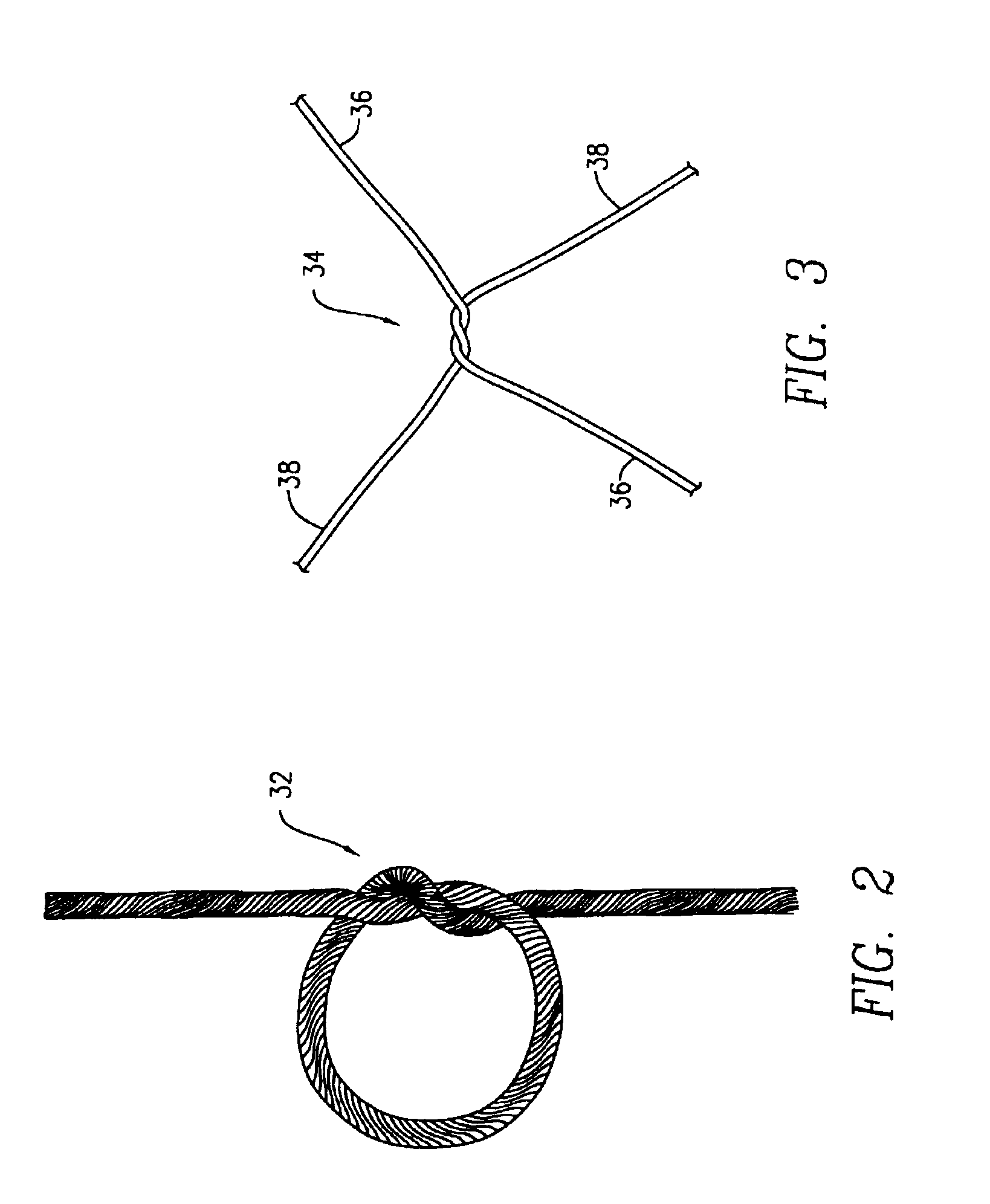Process for making sutures having improved knot tensile strength
a technology of braided sutures and tensile strength, which is applied in the field of braided sutures making processes, can solve the problems of low tensile strength of sutures, inability to effectively hold first throws, and inability to ensure knot safety, so as to improve the tensile strength of knots and improve the tensile strength of braided sutures. , the effect of improving the tensile strength of knots
- Summary
- Abstract
- Description
- Claims
- Application Information
AI Technical Summary
Benefits of technology
Problems solved by technology
Method used
Image
Examples
example 1
Effect of the Order of Process Steps on Knot Tensile Strength
[0022]A series of tests were performed to examine the knot tensile strengths of VICRYL® braided sutures coated with a mixture of 90% ε-caprolactone and 10% glycolide (90 / 10 CAP / GLY) in ethyl acetate. Coatings were applied using conventional laboratory equipment according to the process sequences described herein below.
[0023]Tests were performed using dyed VICRYL® 2-0 sutures that had been coated according to the following process sequences:
[0024]Controls 1 and 2: scour in 100% ethyl acetate, hot stretch, anneal, tank coat with final coat dispersion;
[0025]Lot 1: scour in 100% ethyl acetate, tank coat with 0.5% of 90 / 10 CAP / GLY in ethyl acetate for 10 seconds, hot stretch, anneal, tank coat with final coat dispersion;
[0026]Lot 2: scour in 100% ethyl acetate, tank coat with 1.0% of 90 / 10 CAP / GLY in ethyl acetate for 10 seconds, hot stretch, anneal, tank coat with final coat dispersion;
[0027]Lot 3: scour in 0.5% of 90 / 10 CAP / G...
example 2
Effect of the Order of Process Steps on First Throw Holding Characteristic
[0035]Sutures from Lots 1, 3, 6 and 8 of Example 1 above were selected for tests of their knot security as determined by comparison of their first throw holding characteristics. Three sutures from each lot were tested at each of four incision sites in a porcine study.
[0036]The subjective ranking of first throw holding characteristics, presented in Table 2 below, show that applying the lubricious coating before the hot stretch and annealing steps 18, 20 (Lots 1 and 3) produces better first throw holding properties than applying the lubricious coating after those steps (Lots 6 and 8). On average, both Lot 1 and Lot 3 were considered to have a first throw holding characteristic equivalent to the control sutures. The sutures from Lots 6 and 8 were consistently considered to have worse first throw holding characteristics than the control. The effectiveness of Lots 1 and 3 in holding the first throw of the knot was ...
example 3
Effect of Scour-Coat Step on First Throw Holding Characteristic
[0038]Table 3 compares surgeons' ratings of the first throw holding properties of VICRYL® 2-0 standard size sutures prepared with a scour-coat of 0.5% of 90 / 10 CAP / GLY in ethyl acetate against ratings of the first throw holding properties of similar sutures scoured in 100% ethyl acetate without CAP / GLY. The performance of each suture was rated by 11 surgeons, each performing six ties in a porcine study.
[0039]The results of the study show that the sutures prepared with a scour-coat followed by a standard final coat were preferred equally to the sutures prepared with only the standard final coat, based on comparison of the grand average (mean) results of Table 3 below. The mean values of 2.64 for the scour-coat sutures and 2.67 for the sutures with only a final coat would be equivalent to ratings between “fair” and “good” according to the ranking system used in the study. Comparison of the variances of the test populations...
PUM
| Property | Measurement | Unit |
|---|---|---|
| biocompatible | aaaaa | aaaaa |
| temperature | aaaaa | aaaaa |
| weight | aaaaa | aaaaa |
Abstract
Description
Claims
Application Information
 Login to View More
Login to View More - R&D
- Intellectual Property
- Life Sciences
- Materials
- Tech Scout
- Unparalleled Data Quality
- Higher Quality Content
- 60% Fewer Hallucinations
Browse by: Latest US Patents, China's latest patents, Technical Efficacy Thesaurus, Application Domain, Technology Topic, Popular Technical Reports.
© 2025 PatSnap. All rights reserved.Legal|Privacy policy|Modern Slavery Act Transparency Statement|Sitemap|About US| Contact US: help@patsnap.com


